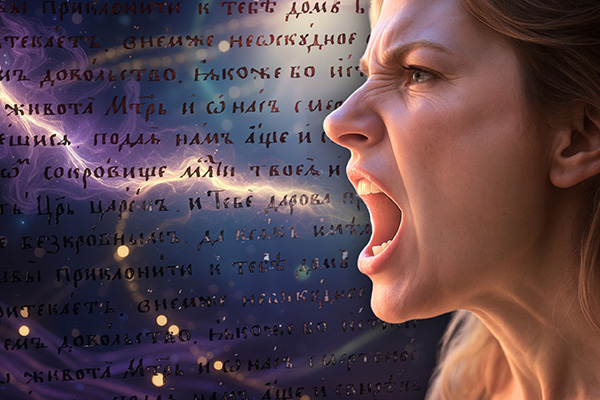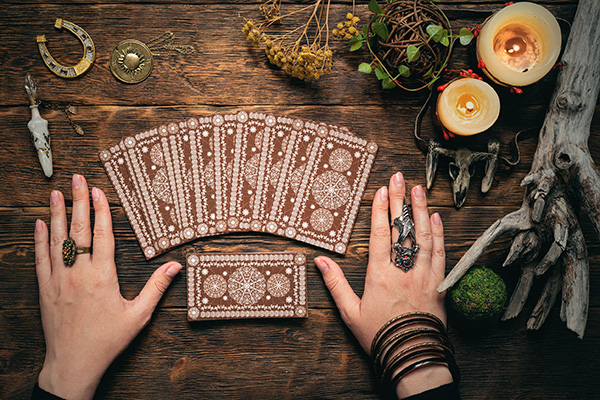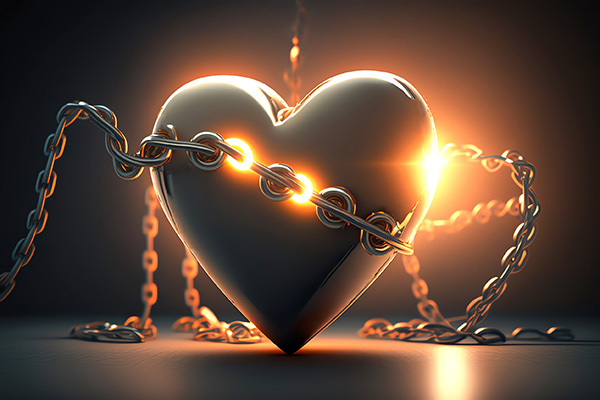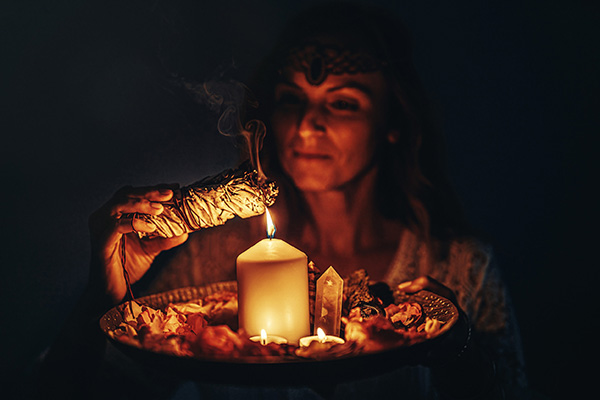ceremony
The Spiritual Power Of The Words You Speak
 Have you ever stopped to truly consider the words you speak? Most of us talk all day, every day, without realizing the impact of each syllable we send out into the world.
Have you ever stopped to truly consider the words you speak? Most of us talk all day, every day, without realizing the impact of each syllable we send out into the world.
Words are much more than just communication sounds. They’re vibrations, frequencies, and intentions. Whether spoken softly, shouted out loud, or whispered quietly to yourself, every word carries mystical energy.
In many spiritual traditions, the spoken word is seen as a powerful metaphysical force or divine power. It is a force of creation and transformation.
From magical incantations to sacred ceremonies, words have long been used to shape everyday reality, influence the world and improve life.
The earliest recorded reference to the power of speech dates back to ancient Mesopotamia. In the city of Uruk, magical incantations were found carved onto clay tablets dating back to approximately the 5th century BCE. These spoken spells were used for protection, healing, and influencing others, revealing a deep understanding of the energetic and powerful nature of speech as early as 2,500 years ago.
Around the same time, the ancient Egyptians believed in the concept of heka, which is often translated today as “magic” but really means “divine creative power.” They believed the gods used heka to create the world, and that humans could access this same creative power through sacred words called hekau.
How To Choose Your First Tarot Deck
 Buying your first deck of tarot cards can be daunting, especially for beginners. However, when approached the right way, it can be a magical and enjoyable experience.
Buying your first deck of tarot cards can be daunting, especially for beginners. However, when approached the right way, it can be a magical and enjoyable experience.
I remember when I decided to buy my first deck years ago. I received a flood of recommendations from well-meaning friends and seasoned readers, all eager to point me toward their personal favorites.
True to my rebellious nature, though, I ignored it all. Instead, I followed my intuition.
I visited a cozy metaphysical shop downtown and wandered to the back, where the tarot decks were displayed on a few revolving racks.
One particular deck instantly captivated me. It had an angelic theme, and even though the imagery and Roman numerals weren’t exactly beginner-friendly, I didn’t care. I knew instantly that it was mine.
Even though I was new to Tarot, I had immersed myself in as much knowledge as I could find before purchasing my first deck. I read every book I could get my hands on and spent hours combing through spiritual forums and metaphysical blogs.
The advice I received from seasoned readers, though sometimes conflicting, gave me a broad foundation of ritual practices and deck care.
I was especially drawn to the idea of treating the cards as sacred tools, rather than just objects. So, by the time I brought my new deck home, I already had a sense of how I needed to honor it and energetically align with it.
Ready For Your Spring Spiritual Renewal?
 Today marks the Spring Equinox and the first day of spring in the Northern Hemisphere. Known also as the Vernal Equinox, it is an astronomical event that marks one of the two times of the year when day and night are nearly equal in length. It usually occurs around March 20th or 21st in the Northern Hemisphere.
Today marks the Spring Equinox and the first day of spring in the Northern Hemisphere. Known also as the Vernal Equinox, it is an astronomical event that marks one of the two times of the year when day and night are nearly equal in length. It usually occurs around March 20th or 21st in the Northern Hemisphere.
During the equinox, the sun crosses the celestial equator and moves north. Many cultures and traditions celebrate it as a time of balance, renewal, and growth. As nature shifts into balance, we are invited to do the same — to clear away what no longer serves us and move into a season of light, action, and new beginnings.
Spring is a new beginning. A new sun rising. The dawn in the wheel of the year. At this time of year our minds are bright and alive with new ideas. Many of us feel inspired and excited to try new things. Life awakens in the warm sunlight and our spirits feel ready for a new beginning.
One of the longstanding customs associated with this time of year is the tradition of “spring cleaning.” Across cultures and generations, people have used this time of year to refresh their homes, clear out accumulated clutter, and invite new energy into their lives.
But spring cleaning is more than just cleaning up our physical space — it is a sacred ritual of renewal, release, and transformation. As the earth awakens from hibernation, we too are called to clear out the old and make room for new energy. From a spiritual perspective, this process is an opportunity to realign ourselves with higher frequencies, release stagnant energy, and invite clarity into our lives.
A Cord Cutting Ritual To Let Go And Move On
 Heartbreak can be one of the most difficult emotional hurdles we face.
Heartbreak can be one of the most difficult emotional hurdles we face.
Whether you’re recovering from a failed romantic relationship, a friendship that has run its course, going no contact with a toxic family member, or any significant emotional connection that has ended, finding closure and healing is essential to moving forward.
Unresolved emotions and lingering energetic attachments can weigh heavily on your heart, making it difficult to embrace new opportunities and experiences.
A powerful way to release these lingering energy attachments is through a cord-cutting ritual. This practice helps cultivate self-love and emotional freedom, and opens the door to new beginnings. Unlike repressing feelings or rushing into distractions, cord cutting allows you to consciously acknowledge and release energetic attachments that no longer serve you.
Energetic cords are metaphysical connections that form between people, places, or situations. They are strengthened by intense emotions and shared experiences. While some cords nourish us with love, support, and positive energy, others can drain our vitality — especially when a relationship has ended or become unhealthy. These draining cords can lead to repetitive thoughts, emotional stagnation, or a feeling of being energetically “stuck.”
A cord cutting ritual does not erase cherished memories or sever positive emotions you may have shared with someone. Instead, it focuses on releasing unhealthy attachments that prevent emotional freedom and personal growth. By clearing these residual energies, you make room for peace, clarity, and new possibilities to flow into your life.
Embrace The Wisdom Of Your Inner Crone
 The archetypes of the Maiden, the Mother, and the Crone are central figures in various spiritual and mythological traditions, especially in Paganism and Wicca, where they represent the Triple Goddess. They symbolize the three primary phases of a woman’s life and the cycles of nature, and are associated with the phases of the moon — waxing, full, and waning.
The archetypes of the Maiden, the Mother, and the Crone are central figures in various spiritual and mythological traditions, especially in Paganism and Wicca, where they represent the Triple Goddess. They symbolize the three primary phases of a woman’s life and the cycles of nature, and are associated with the phases of the moon — waxing, full, and waning.
The Maiden is associated with the waxing moon, representing youth, new beginnings, potential, and innocence; the Mother aligns with the full moon, embodying creation, fertility, abundance, and maturity; and the Crone is associated with the waning moon, symbolizing wisdom, life experience, reflection, and endings that lead to new beginnings.
In Greek mythology, these archetypes are seen in the Moirai or Fates: Clotho (the spinner of the thread of life), Lachesis (the measurer), and Atropos (the cutter). Similarly, in Hinduism, the goddess Kali represents the transformative power of the Crone, who presides over destruction and rebirth. They remind us of the cyclical nature of existence and the interconnectedness of the stages of life.
Mary, the mother of Jesus, embodies the essence of the Crone within the Christian tradition. As Mater Dolorosa (Sorrowful Mother), she is revered as a figure of profound strength and resilience, having witnessed the suffering and death of her Son. Her wisdom, born of enduring immense grief and unwavering faith, serves as a beacon of strength and compassion for the faithful. She is seen as a compassionate and empathetic figure who understands human suffering and intercedes for believers with her love and wisdom.
The Ancient Spiritual Tradition Of Smudging
 Just as our physical environment can become cluttered and unclean, our aura or energy field also accumulates stagnant and negative energy.
Just as our physical environment can become cluttered and unclean, our aura or energy field also accumulates stagnant and negative energy.
Regularly cleaning our homes and workplaces promotes health, hygiene and optimal function — and the same principle applies to our personal and spiritual energy. Clearing our energy field and environment helps to release negativity and toxic emotions, stress and anxiety, and promotes a sense of calm, clarity and balance.
Energy cleansing is essential for removing blockages that may be hindering personal and spiritual growth or disrupting your connection to spirit and the divine. Over time, lingering negative or toxic energy can even manifest as mental health issues, spiritual disconnection and even physical ailments.
By maintaining a regular practice of energy cleansing, you create a positive, harmonious flow of energy that supports overall health and well-being. In addition, a clear energy field sharpens your intuition and inner guidance, making it easier to align with your higher self and make decisions that are aligned with your greatest good.
Smudging is also a powerful way to clear negative energy attachments and banish malevolent spirit entities.
One of the most time-tested and effective methods of clearing unwanted energy is smudging, or smoke cleansing — an ancient purification ritual steeped in history and practiced by various cultures, religions, and spiritual traditions around the world.
Abundance Rituals For A Prosperous 2025
 The universal energy of renewal and infinite possibility beckons as we enter the year 2025. The beginning of a new year is a great time to release old energies that no longer serve us and to invite a new wave of abundance, prosperity and fulfillment into our lives.
The universal energy of renewal and infinite possibility beckons as we enter the year 2025. The beginning of a new year is a great time to release old energies that no longer serve us and to invite a new wave of abundance, prosperity and fulfillment into our lives.
New Year’s manifestation practices not only clarify and align our intentions from the start, but also release energetic blockages, allowing prosperity and well-being to flourish. Releasing the old creates space for new possibilities and opportunities to flow into our lives.
The modern idea of setting intentions or “New Year’s resolutions” has its roots in various traditions. For centuries, cultures around the world have marked the transition to a new year with spiritual, esoteric, and religious practices and ceremonies.
In Mesopotamia, for example, the Akitu festival celebrated the Spring Equinox as the beginning of a new year and included rituals to honor the gods and ensure a bountiful harvest.
In Babylonia, at the beginning of each year, people made promises to their deities to return borrowed items and pay their debts. These promises were a way to start the year fresh and in good standing with the higher realms.
The ancient Romans perpetuated the tradition by dedicating the month of January to Janus, the two-faced god who looked both backward and forward to symbolize “looking back” on the past year and “looking forward” to the New Year, making it a time for personal reflection and new beginnings.